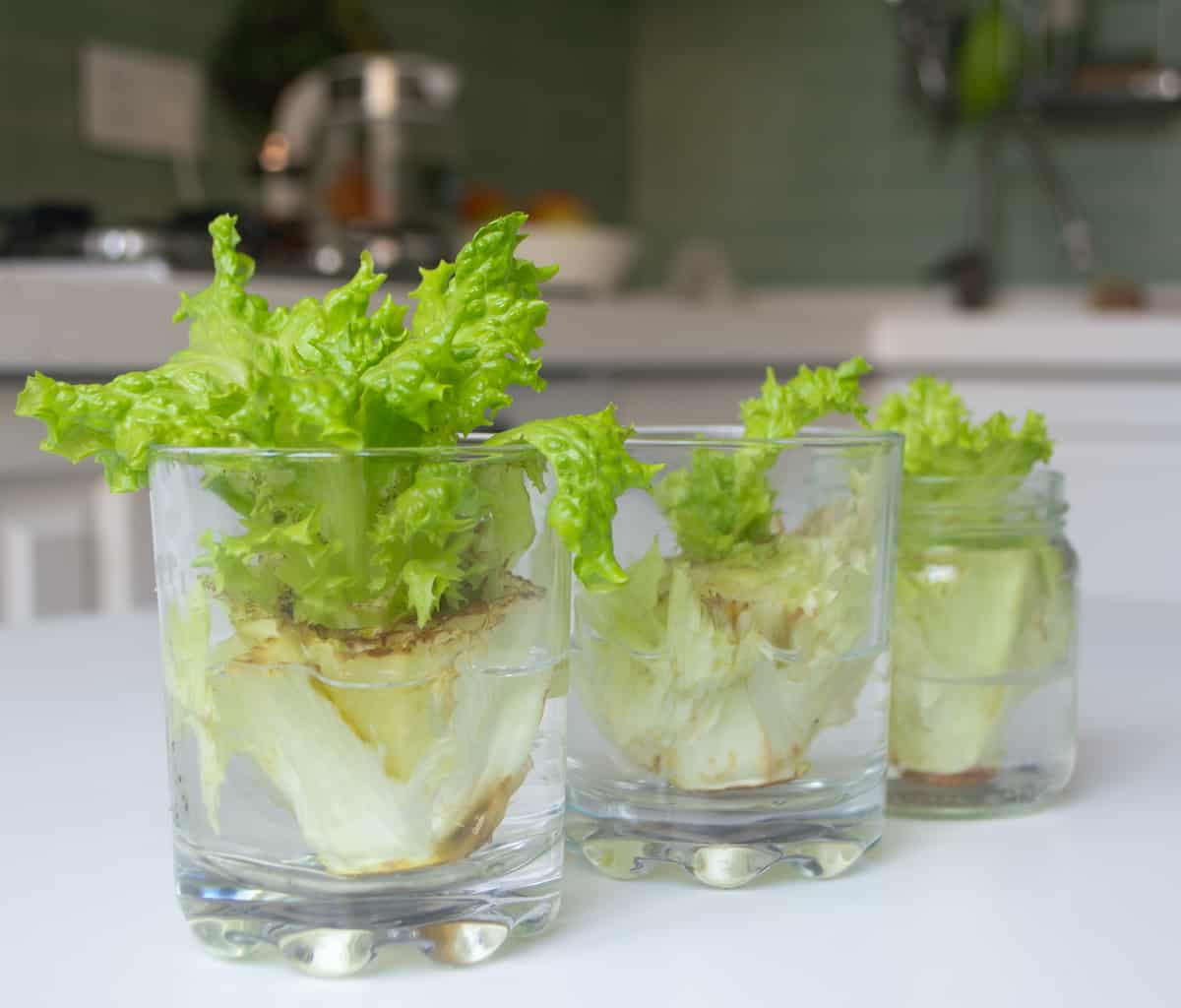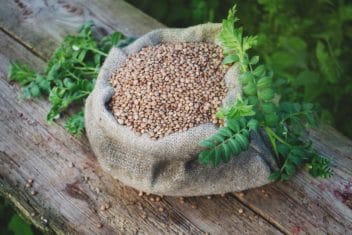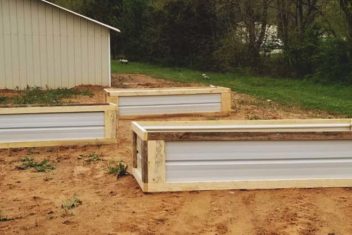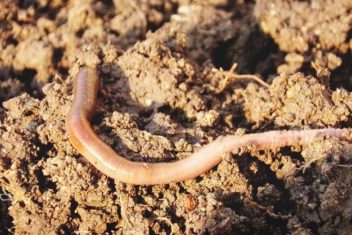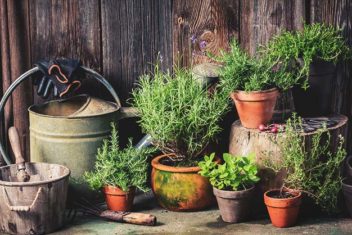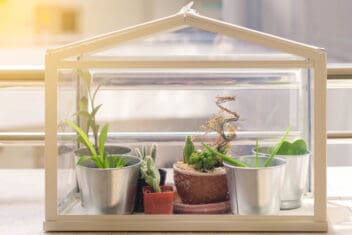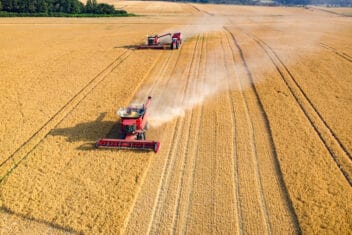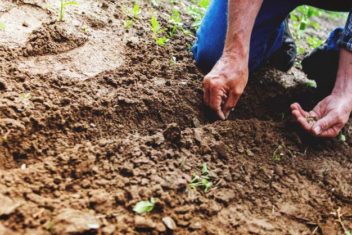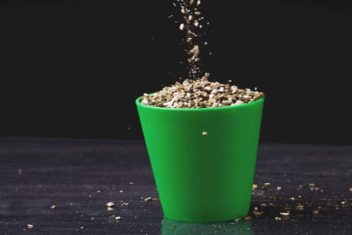I had no idea I could regrow food from the stuff that I normally throw out until I saw a friend grow lettuce from scraps. I’d been wasting food for years because I’ve thrown bits out that could have provided my family with another meal.
If you want to stretch your food budget a little and create a more sustainable lifestyle, then things like growing lettuce from scraps is a great place to start.
It’s also a fun way to show your kids how easy it is to grow plants and provide food for the family.
Varieties of Lettuce to Regrow
Try any head or leaf lettuce you like, but some varieties grow better than others, while a few won’t regrow at all. Experiment and see how it goes. These are my top five picks:
Romaine
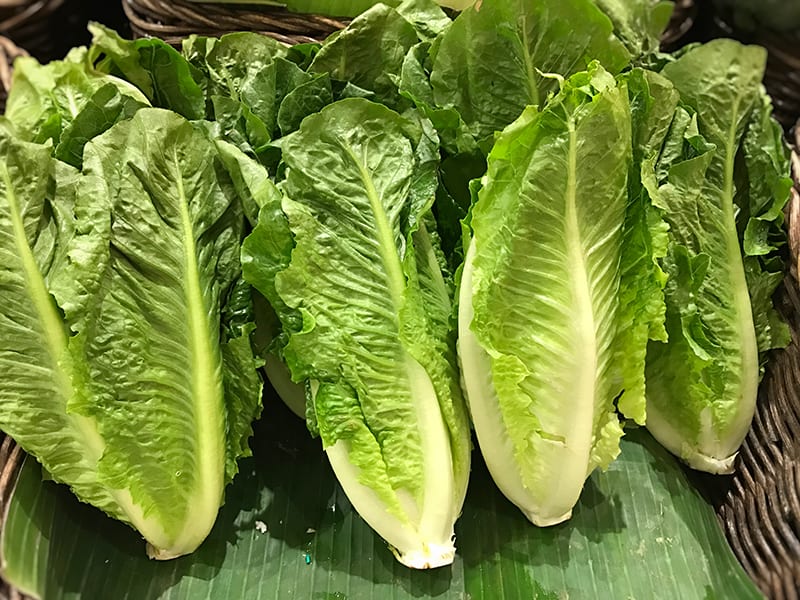
Using romaine hearts to regrow lettuce scraps has given the best results for me. It was the fastest to produce more leaves and grew the most leaves as well.
Radicchio
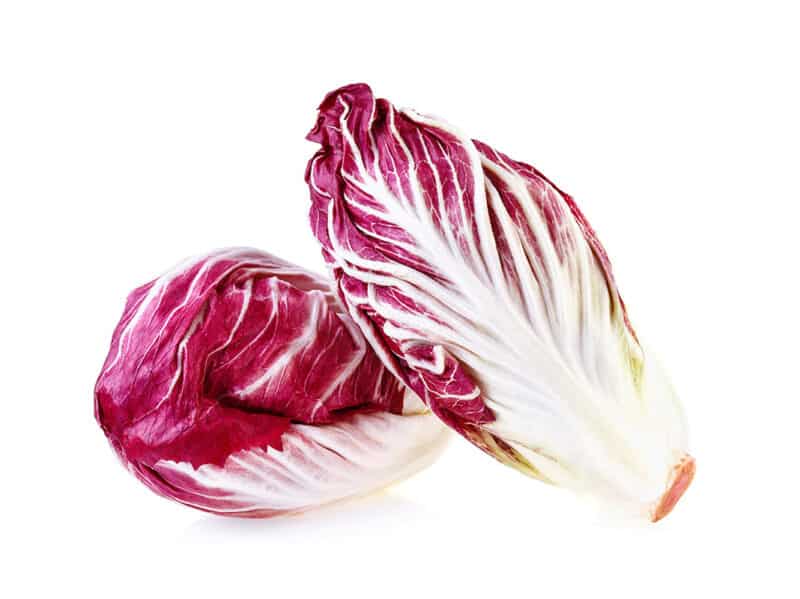
For fast regrowth, radicchio is another good choice. I noticed new leaves in about 3 days.
Boston Leaf
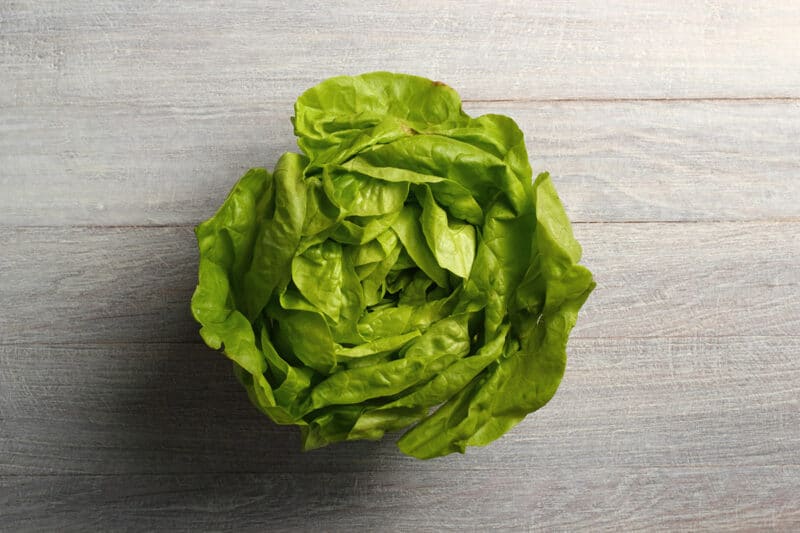
Another reliable variety to regrow. I found Boston leaf was a little slower than romaine. There was a little less regrowth as well.
Leaf Lettuce
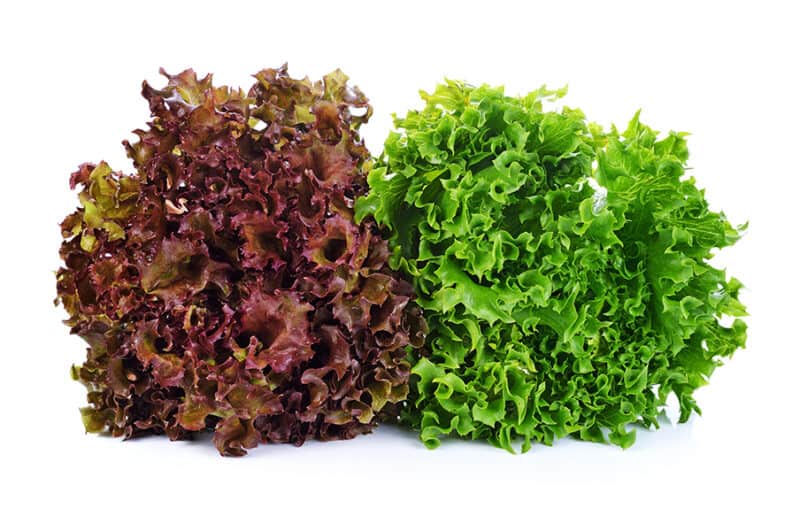
I got a usable amount in about 12 days. The growth was small, but a lot of leaves formed. It looked great in a baby leaf salad. There was no bitterness with these crisp little leaves.
Cabbage
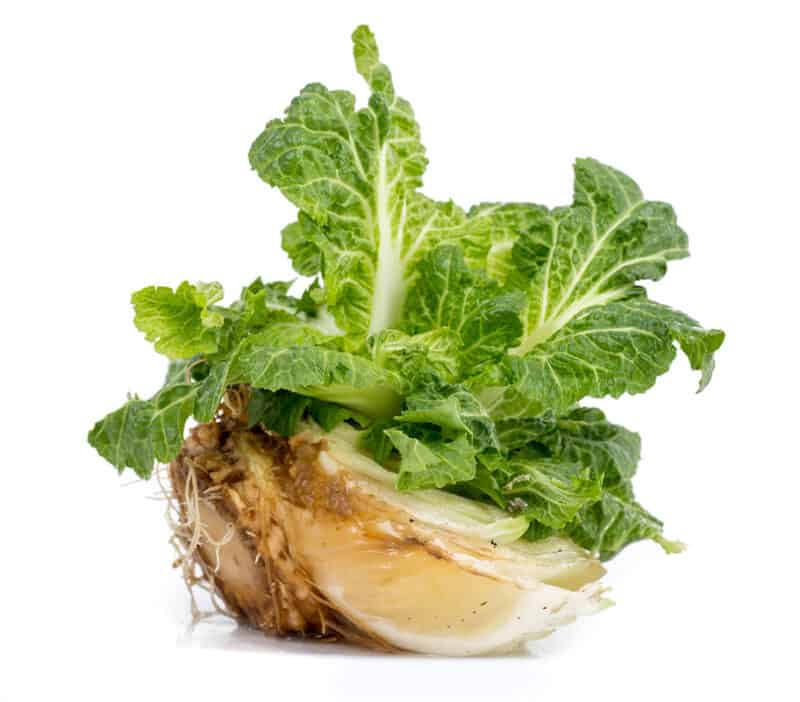
Not technically a lettuce, you can regrow some cabbage the same way you do lettuce scraps.
6 Steps to Regrow Lettuce from Scraps
Growing lettuce from scraps doesn’t take up a lot of space, so you can have quite a few going at the same time.
It’s good to try a number of different varieties so you can mix the leaves up when you use them and test out which works best for you.
1. Prep Your Lettuce
When you use your lettuce for a meal, leave about 2 inches of the base behind. Anything less than that and you may find it won’t regrow leaves.
You can score the bottom of the stem and put some toothpicks in at an angle at the base to hold it off the bottom of the container if you want. Neither step is required.
Use three to make a tripod or four to provide a more stable base. Insert the toothpick near the bottom of the base on the side and repeat. This will hold it steady and stop it from tipping over in the water.
2. Find a Container
Anything will do, as long as it doesn’t leak. I prefer a shallow container and in the past I’ve used:
- Yogurt containers
- A drinking glass
- A small vase
- Cottage cheese container
- A soup bowl
- Mason jars
The drinking glass and mason jars gave me the best result and I suspect the lettuce base got more of the sun through the clear sides.
If you find the container is unstable, use small, clean stones to weigh it down. You don’t want it falling over when the leaves start to grow.
I used my kid’s marbles, but anything clean and small with a bit of weight will do. Just pop them in the water.
3. Add Water
Place the lettuce base in the container and add water. Fill it so the base is covered at least halfway up the stem.
Too much water will make the top of the stem rot. Not enough water will stop the leaves from regrowing.
If you find the base is unstable and falls over in the water, you can use toothpicks to stabilize it.
Check the container daily and replace the water every day or two.
4. Provide Sunlight
Each lettuce stem is going to use a lot of energy to regrow, so sunlight is important. Place it on a window sill.
In temperate areas, try putting the container outside during the day. Be mindful of how fast the water will evaporate though.
You can also grow the lettuce inside under grow lights.
If you live in an area with harsh sun, provide a little protection in the hottest part of the day as the magnified heat through the glass will be too much.
At the same time, if the stems don’t get enough sun throughout the day, they tend to begin to mold.
If your house is warm or if you have a log burner or forced air heating or similar, mist the leaves to keep them moist. The plant will dry out and wilt in a warm, dry house even though it’s sitting in water.
5. Feed Your Lettuce
You don’t have to fertilize your lettuce, but it will grow better if you do. I have regrown lettuce from scraps many times. I’ve fed some with fertilizer and didn’t with others.
The fertilized lettuce gave me slightly bigger leaves and they were less bitter than the unfertilized plants.
Use a liquid hydroponic fertilizer. They’re all different in strength, so follow the instructions on the container.
6. Time to Grow
Now, all you need to do is give the lettuce time to regrow. Don’t forget about the water and keep an eye out for mold or rotting.
This is a quick process and you should see growth within a couple of days. If there is no growth within a week, I suggest giving up on that lettuce and trying a new one.
For some reason, every once in a while you’ll run into a dud. No point in trying to fight it. Just try again.
If the stem gets moldy, throw it away. I’ve had a number of stems get mold. Air circulation and sunlight seems to make a difference.
Replanting the Lettuce
You may see some roots grow off the bottom of your lettuce base. This is natural growth from the plant, but they’re not sufficient to feed the plant if you plant it in the garden.
When you buy lettuce from the shop, it has likely had the roots removed. The ones that grow in the water are different than typical growing roots.
Also, you can’t regrow a whole head of lettuce from scraps. You only get leaves.
Some gardeners have had some luck planting their lettuce stem after it’s started regrowth, but the difference in harvest will be minimal.
Harvesting
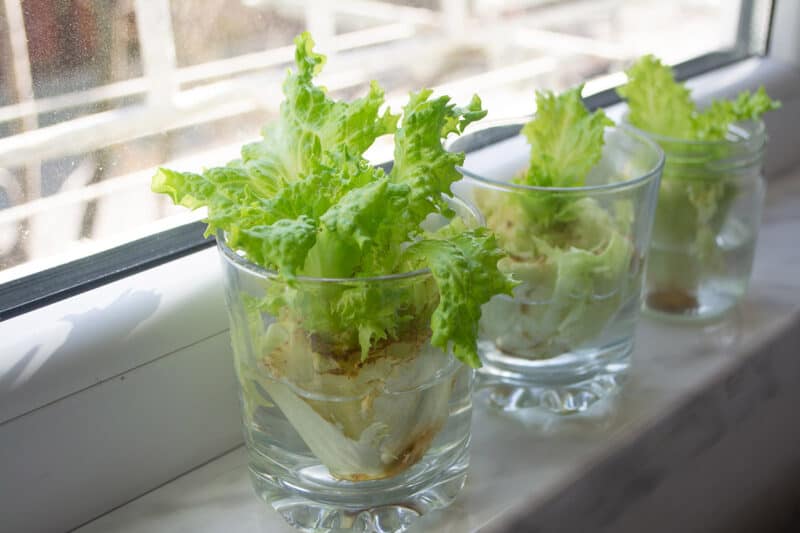
I’ve harvested new leaves in as little as 9 days and as much as 16 days. It all depends on the type of lettuce and whether it’s happily growing.
Generally, all the lettuce regrowth you’re going to get will be in the first 15 days. After that, the regrowth will stop.
Pick the leaves when they are reasonably small. Lettuces tend to be bitter when they regrow into big leaves. It may be tempting to get them as big as possible, but smaller leaves are better. Think baby leaf salad.
I’ve had enough to make a tiny salad or a few sandwiches from one plant and enough for a good-sized salad from another. You just have to wait and see what the lettuce gives you.
Eventually, the plant will bolt to seed with a thick stem growing up the middle. At this point, you can discard the plant and start the process with a new stem.
The Bottom Line
Are you one of the increasing number of people looking to live a more sustainable lifestyle? Perhaps you don’t want to live in a wasteful society, so you look for economical and sustainable ways to grow food, as I do.
Growing lettuce from scraps is a great way to save a bit of money and to be kinder to the environment. Show your kids this fun project because they can literally watch the leaves grow in a few days.
Even if you get a few leaves, you are growing food from what most people throw in the garbage or compost heap. You’re literally getting something for nothing.
